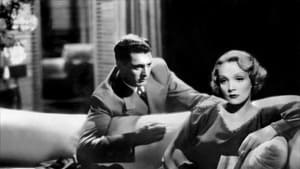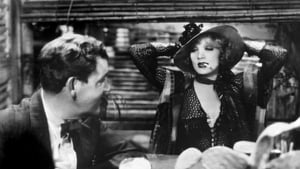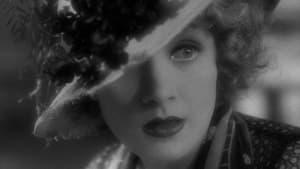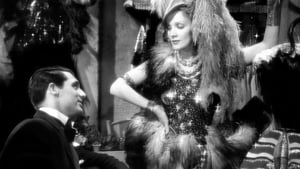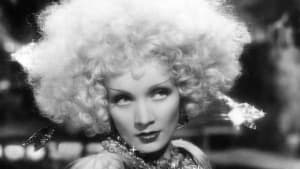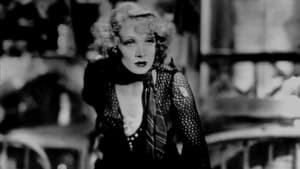Contact: [email protected]
Video Sources 0 Views
- Watch trailer
- Blonde Venus

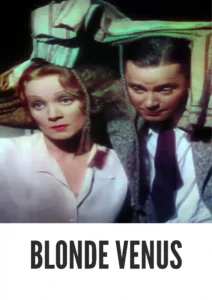
Blonde Venus 1932 First Early Colored Films Version
Synopsis
Table of Contents
ToggleReview: Blonde Venus (1932) – A Captivating Tale of Love and Sacrifice in the Golden Age of Hollywood

Introduction
“Blonde Venus” (1932) stands as a shining example of the glamorous and provocative cinema of the Golden Age of Hollywood. In this review, we’ll explore the significance of this classic film, delving into its themes, performances, and enduring legacy in the realm of romantic drama.
Check The Full Colorized Movies List
Check Our Colorized Movies Trailer Channel
Understanding Blonde Venus 1932: Director, Cast, and Genre
Directed by the visionary Josef von Sternberg, “Blonde Venus” (1932) showcases his mastery of visual storytelling and bold cinematic style. The film stars the luminous Marlene Dietrich in the role of a lifetime, alongside a talented ensemble cast that includes Herbert Marshall and Cary Grant. Blending elements of romance, melodrama, and musical, “Blonde Venus” (1932) transports audiences to a world of glittering nights, forbidden desires, and heartbreaking choices.
Exploring the World of Blonde Venus 1932: Plot and Characters
At its core, “Blonde Venus” (1932) follows the tumultuous journey of a young mother, played by Marlene Dietrich, who is forced to confront her past and make difficult choices to protect her family. As she navigates the glittering world of show business and the complexities of love, she grapples with questions of identity, morality, and sacrifice. Along the way, she encounters a host of colorful characters, each with their own desires and motivations, adding depth and nuance to the film’s rich tapestry of emotions.
The Art of Film Colorization
Film colorization serves as a transformative tool that enhances the visual experience of classic movies, breathing new life into timeless stories and captivating audiences with vibrant hues. By digitally adding color to black and white films, colorization allows viewers to immerse themselves in the rich tapestry of cinematic worlds, exploring every nuance and detail with fresh eyes and renewed appreciation.
Early Colored Films: A Brief History
The history of colored films traces its roots back to the early days of cinema, with filmmakers experimenting with various techniques to add color to their creations. From hand-tinted frames to early Technicolor processes, the evolution of colored film has been marked by innovation and ingenuity, paving the way for the development of modern colorization techniques that continue to captivate audiences to this day.
Blonde Venus 1932 and Its Early Colored Version
The decision to release “Blonde Venus” (1932) in a colorized format was met with both excitement and trepidation. While some welcomed the opportunity to experience the film in vibrant color, others expressed concerns about the potential impact on its visual aesthetic. Nevertheless, the early colored version of “Blonde Venus” (1932) offers viewers a fresh perspective on the timeless tale of love and sacrifice, enhancing its emotional resonance and captivating audiences with its luminous beauty.
The Debate Over Film Colorization
The debate over film colorization continues to divide audiences and critics alike, with proponents praising its ability to breathe new life into classic movies and introduce them to a new generation of viewers, while detractors argue that it compromises the artistic integrity of the original work and diminishes its historical significance. As the debate rages on, filmmakers and audiences alike are left to ponder the merits and drawbacks of colorization in the ever-evolving landscape of cinema.
Examining Blonde Venus 1932 as an Early Colored Film
As with any colorized classic, the impact of colorization on “Blonde Venus” (1932) is a matter of personal interpretation. Some may argue that it enhances the film’s visual appeal and immerses viewers in its world, while others may feel that it detracts from the stark beauty of the original black and white version. Regardless of one’s stance on the issue, there’s no denying the enduring power of “Blonde Venus” (1932) as a timeless romantic drama that continues to capture the hearts of audiences around the world.
Influence and Legacy: Blonde Venus 1932’s Impact on Cinema
“Blonde Venus” (1932) has left an indelible mark on the world of cinema, inspiring countless filmmakers and captivating audiences with its timeless tale of love and sacrifice. From its unforgettable performances to its sweeping cinematography, the film continues to resonate with viewers of all ages, reaffirming its status as a beloved classic of the romantic drama genre.
Director’s Cinematic Legacy: Beyond Blonde Venus 1932
Josef von Sternberg’s influence extends far beyond “Blonde Venus” (1932), with a diverse body of work that continues to captivate audiences around the globe. From “The Blue Angel” to “Shanghai Express,” Sternberg’s films are celebrated for their visual flair, provocative themes, and unforgettable characters, solidifying his legacy as one of the preeminent directors of Hollywood’s Golden Age. Through his groundbreaking work, Sternberg has left an indelible imprint on the world of cinema, inspiring generations of filmmakers to follow in his footsteps.
Themes Explored in Blonde Venus 1932
“Blonde Venus” (1932) explores a myriad of themes, from the transformative power of love to the sacrifices we make for those we hold dear. Through its richly drawn characters and poignant storytelling, the film invites viewers to ponder the complexities of human relationships and the choices we face in pursuit of happiness. As audiences immerse themselves in the world of “Blonde Venus” (1932), they are reminded of the universal truths that bind us together and the enduring power of love to overcome even the greatest of obstacles.
Reception and Controversy Surrounding Blonde Venus 1932
Upon its release, “Blonde Venus” (1932) received widespread critical acclaim, with many praising its provocative themes, stunning visuals, and powerhouse performances. However, the decision to release the film in a colorized format sparked debate among purists, reigniting the age-old discussion surrounding film preservation and artistic integrity. Despite the controversy, “Blonde Venus” (1932) remains a beloved classic that continues to resonate with audiences of all ages, reaffirming its status as a timeless masterpiece of the romantic drama genre.
Where to Watch Blonde Venus 1932 Online
For those eager to experience the timeless magic of “Blonde Venus” (1932), the film is readily available on popular streaming platforms such as Netflix, Amazon Prime, and Hulu. Whether you choose to watch it in its original black and white format or the early colored version, “Blonde Venus” (1932) promises to transport you to a world of passion, glamour, and romance, where love knows no bounds and the human spirit shines brightest in the darkest of times.
FAQs About Blonde Venus 1932
Q: Is “Blonde Venus” (1932) based on a true story? A: No, “Blonde Venus” (1932) is a fictional tale crafted by screenwriter Jules Furthman, inspired by the cultural and social milieu of the era.
Q: Who are the main actors in “Blonde Venus” (1932)? A: “Blonde Venus” (1932) stars the luminous Marlene Dietrich in the lead role, alongside Herbert Marshall and Cary Grant in supporting roles.
Q: What awards did “Blonde Venus” (1932) win? A: While “Blonde Venus” (1932) did not win any major awards, it received critical acclaim for its provocative themes and stunning visuals.
Q: Why was “Blonde Venus” (1932) released in a colorized format? A: The decision to release “Blonde Venus” (1932) in color was made to introduce the film to a new generation of viewers and enhance its visual appeal for modern audiences. While the choice to colorize the film sparked debate among purists, it ultimately allowed “Blonde Venus” (1932) to reach a wider audience and ensure its continued relevance in the annals of cinematic history.
Conclusion
As we reflect on the enduring legacy of “Blonde Venus” (1932), let us celebrate its status as a timeless classic that continues to captivate audiences with its provocative themes, stunning visuals, and powerhouse performances. Whether viewed in its original black and white format or the early colored version, “Blonde Venus” (1932) remains a shining example of the power of cinema to inspire, entertain, and provoke thought.
So, whether you’re a seasoned cinephile or a casual moviegoer, take a moment to revisit “Blonde Venus” (1932) and experience the magic of the Golden Age of Hollywood as never before. For in the timeless tale of love, sacrifice, and redemption that unfolds on screen, you’ll find a treasure trove of wisdom and wonder that will stay with you long after the credits roll.
